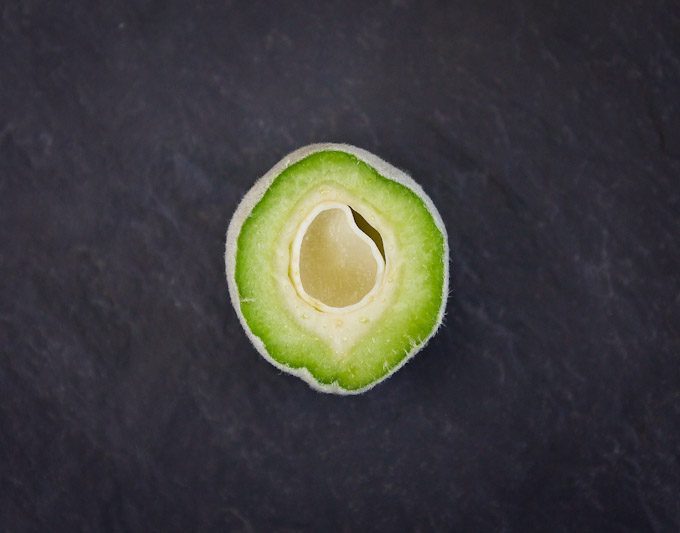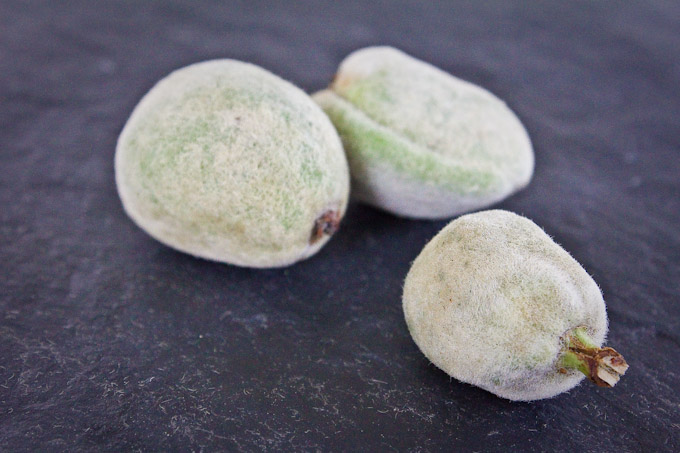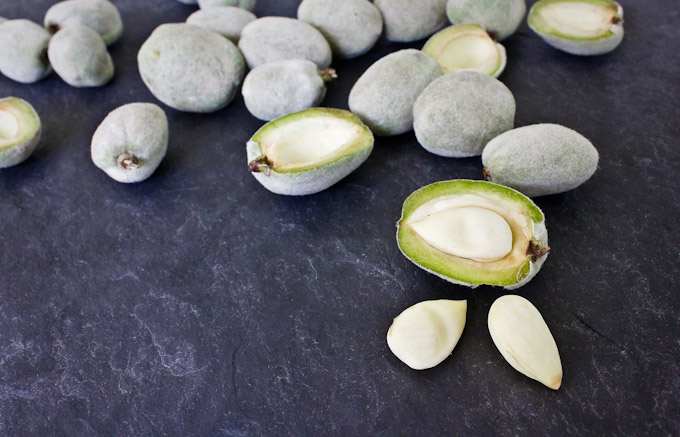 Recently I was in the Batali/Bastianich Italian food megastore Eataly in NYC. Always a recipe-provoking stop, particularly mid-week when not utterly tourist-jammed and you can actually see the counters and food. The variety of food and ingredient offerings is as impressive as the block-wide size of this culinary cathedral. Rarely do I go there and not see something I have never encountered previously. Never have I been able to leave there empty handed. 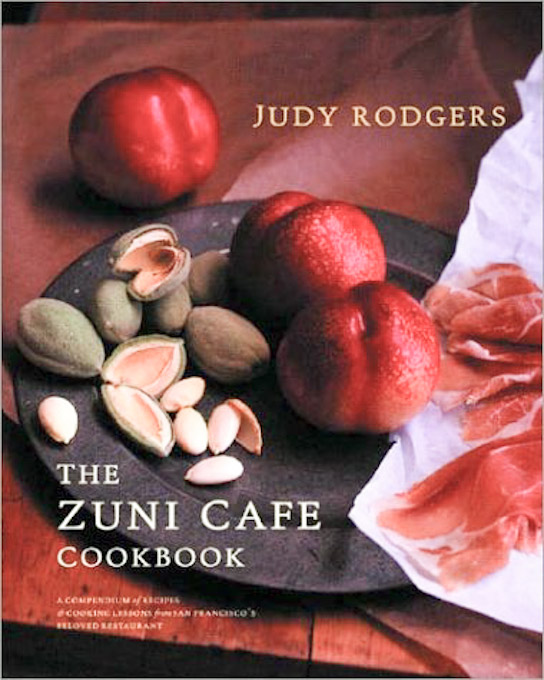 On this balmy day I came across a long basket of fuzzy green almonds. The only other time I've seen them was on the cover of my beloved Zuni Cafe cookbook On this balmy day I came across a long basket of fuzzy green almonds. The only other time I've seen them was on the cover of my beloved Zuni Cafe cookbookSo into my basket went a half pound. After a little investigating, I learned that these green almonds were the unripe fruit of the almond tree, and while green, the outer flesh, and in turn entire fruit, is edible. The green-fuzzy flesh is firm and crisp, much like biting into an unripe peach--of which they are a relative and bear a striking resemblance in this form. The inside almond nut, with which we are much more familiar, was still pale white, soft and jelly-like on the inside. Biting into that was like a sliver of a firm grape, with just the slightest burst of moisture. None of the flavors are particularly strong, but just fresh and green and vital. The outside flesh tastes much like a cross between an unripe peach and a fresh-picked raw green bean. The center jellied nut was slightly sweeter with just a hint of sour, but again, nothing overpowering. But the combination of textures and herbaceous qualities I found thrilling and unable to put down. Green almonds are popular in many Middle Eastern cuisines, simply dipped lightly in a dish of salt as they are eaten. This way was my favorite. Like many of their green baby spring cohorts, these green almonds are only available for a brief eight week season from mid-April to mid-June. I was a little late to the party too this year, but keep your eyes out this week and definitely snap some up if you come across them. Put them on your radar for next year regardless. | ||||||||||||||||
 It's soft shell crab season! From mid-May to early September for the east coast, and longer if you are near the gulf coast, we are in the time of year when these sweet, oceany delicacies are popping up practically all over. Soft shell crabs are regular crabs who have outgrown their current hard exoskeleton, and have shed it as most crustaceans do. Within a few hours their new, soft under-skeleton starts to harden if they remain in the ocean's cold water. But if caught during that precious window, the shell is soft enough where the entire animal, shell and all, is tender enough to be consumed. Not only are they plump and sweet and briny, but you get all of that delectable crab goodness without having to deal with cracking and mallets and bits of flying shell. It also allows for pretty cool whole crab presentations. There are a few small bits of the crab that need to be removed (or cleaned or dressed) before cooking and eating. Your fishmonger can generally do this for you, but ideally it should be done right before cooking to maintain maximum freshness. It is just four simple steps, and worth trying yourself. (more…) | ||||||||||||||||
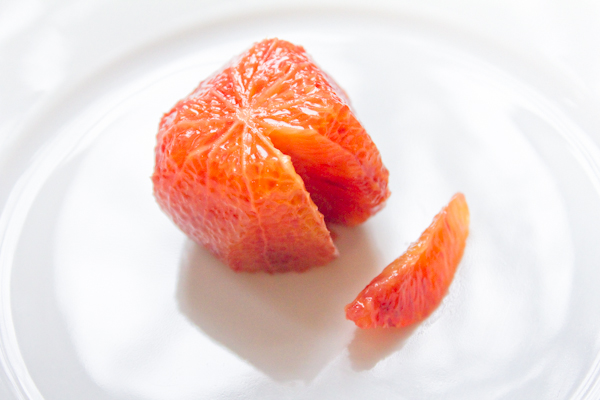 As committed to a locavore diet as I am, for sanity's sake, a little citrus is a welcome addition at this seemingly endless point in the winter season. Lemons, oranges, limes, tangerines and just recently, blood oranges, have made their way into salads, dressings, marinades and desserts, and brought some desperately needed sunshine to my own stockpiles of potatoes, squash, and canned vegetables in our cellar. Frequently, when cooking with citrus, the recipe will require the fruit to be Supremed. A supreme of citrus is one of the natural sections that has been cut away from the tougher, and sometimes bitter, membrane. A much lovelier presentation, particularly in salads, it also exposes more of the flesh and juice and allows the ingredients to blend together more fully, without the "outer wrapping" of the chewy membrane. Note: A very sharp pairing knife will help make this process a lot more successful. 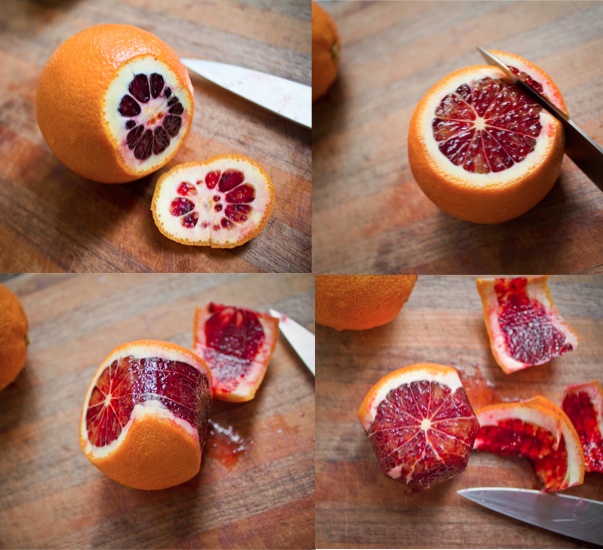 (more…) | ||||||||||||||||
|
|
{ welcome! }
 Catie Baumer Schwalb is a chef, food writer and photographer, who splits her life between the city and the country. Not too long ago Catie was a New York City based actress and playwright for more than a decade. She has her Master of Fine Arts from the National Theater Conservatory, and her Grand Diplôme in classic culinary arts from the French Culinary Institute in New York City.
... Read More ≫
Catie Baumer Schwalb is a chef, food writer and photographer, who splits her life between the city and the country. Not too long ago Catie was a New York City based actress and playwright for more than a decade. She has her Master of Fine Arts from the National Theater Conservatory, and her Grand Diplôme in classic culinary arts from the French Culinary Institute in New York City.
... Read More ≫{ get in touch }
{ what's new }
September 12, 2015
August 19, 2013
August 15, 2013
August 13, 2013
August 1, 2013
{ favorites }
{ archives }
Appetizers / Breads & Pastry / Breakfast / Cakes / Canning / Condiments / Dinner / DIY foods / Drinks / Fall / favorites / Grains / Holidays / Local / Noodles & Pasta / Pies & Tarts / Poultry / Salads / Seafood / Snacks / Soup / Spring / Summer / Sweets / Techniques / Vegetables / Vegetarian / Winter /
{ currently reading }
|



